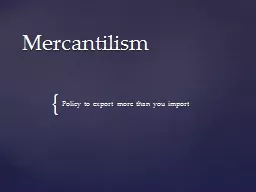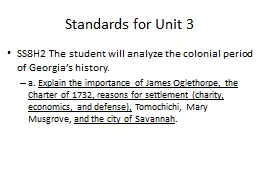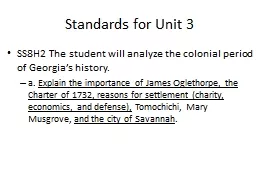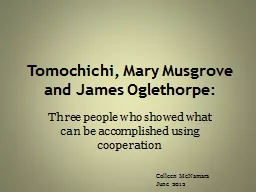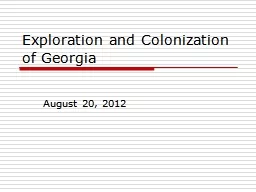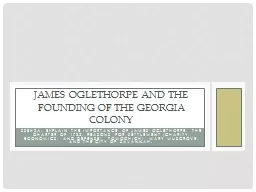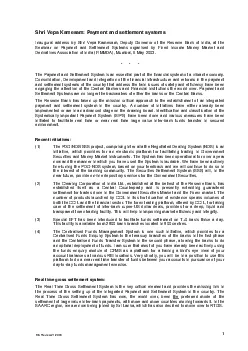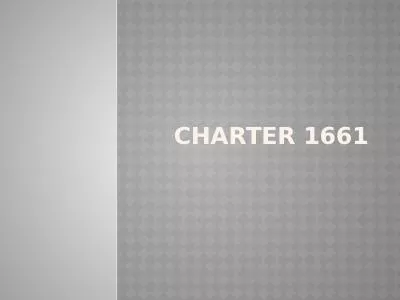PPT-SS8H2a. Explain the importance of James Oglethorpe, the Charter of 1732, reasons for settlement
Author : ellena-manuel | Published Date : 2018-11-10
James Oglethorpe and the founding of the Georgia colony European Settlement In the 1600s the English began permanent settlements along the coast of the New World
Presentation Embed Code
Download Presentation
Download Presentation The PPT/PDF document "SS8H2a. Explain the importance of James ..." is the property of its rightful owner. Permission is granted to download and print the materials on this website for personal, non-commercial use only, and to display it on your personal computer provided you do not modify the materials and that you retain all copyright notices contained in the materials. By downloading content from our website, you accept the terms of this agreement.
SS8H2a. Explain the importance of James Oglethorpe, the Charter of 1732, reasons for settlement: Transcript
Download Rules Of Document
"SS8H2a. Explain the importance of James Oglethorpe, the Charter of 1732, reasons for settlement"The content belongs to its owner. You may download and print it for personal use, without modification, and keep all copyright notices. By downloading, you agree to these terms.
Related Documents


